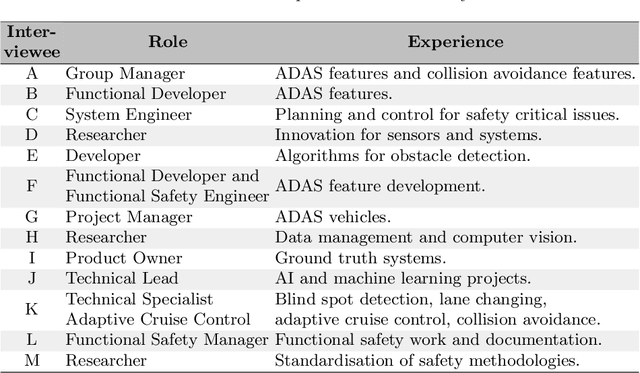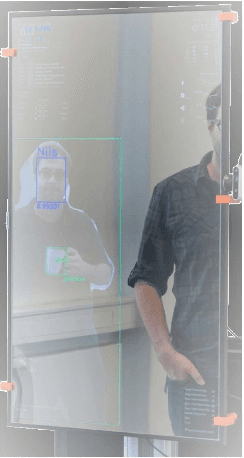Olof Eriksson
Fundamental Trade-Offs in Monostatic ISAC: A Holistic Investigation Towards 6G
Jan 31, 2024



Abstract:Integrated sensing and communication (ISAC) emerges as a cornerstone technology for the upcoming 6G era, seamlessly incorporating sensing functionality into wireless networks as an inherent capability. This paper undertakes a holistic investigation of two fundamental trade-offs in monostatic OFDM ISAC systems-namely, the time-frequency domain trade-off and the spatial domain trade-off. To ensure robust sensing across diverse modulation orders in the time-frequency domain, including high-order QAM, we design a linear minimum mean-squared-error (LMMSE) estimator tailored for sensing with known, randomly generated signals of varying amplitude. Moreover, we explore spatial domain trade-offs through two ISAC transmission strategies: concurrent, employing joint beams, and time-sharing, using separate, time-non-overlapping beams for sensing and communications. Simulations demonstrate superior performance of the LMMSE estimator in detecting weak targets in the presence of strong ones under high-order QAM, consistently yielding more favorable ISAC trade-offs than existing baselines. Key insights into these trade-offs under various modulation schemes, SNR conditions, target radar cross section (RCS) levels and transmission strategies highlight the merits of the proposed LMMSE approach.
Integrated Sensing and Communications with MIMO-OTFS
Jun 10, 2023Abstract:Orthogonal time frequency space (OTFS) is a promising alternative to orthogonal frequency division multiplexing (OFDM) for high-mobility communications. We propose a novel multiple-input multiple-output (MIMO) integrated sensing and communication (ISAC) system based on OTFS modulation. We begin by deriving new sensing and communication signal models for the proposed MIMO-OTFS ISAC system that explicitly capture inter-symbol interference (ISI) and inter-carrier interference (ICI) effects. We then develop a generalized likelihood ratio test (GLRT) based multi-target detection and delay-Doppler-angle estimation algorithm for MIMO-OTFS radar sensing that can simultaneously mitigate and exploit ISI/ICI effects, to prevent target masking and surpass standard unambiguous detection limits in range/velocity. Moreover, considering two operational modes (search/track), we propose an adaptive MIMO-OTFS ISAC transmission strategy. For the search mode, we introduce the concept of delay-Doppler (DD) multiplexing, enabling omnidirectional probing of the environment and large virtual array at the OTFS radar receiver. For the track mode, we pursue a directional transmission approach and design an OTFS ISAC optimization algorithm in spatial and DD domains, seeking the optimal trade-off between radar signal-to-noise ratio (SNR) and achievable rate. Simulation results verify the effectiveness of the proposed sensing algorithm and reveal valuable insights into OTFS ISAC trade-offs under varying communication channel characteristics.
VEDLIoT -- Next generation accelerated AIoT systems and applications
May 09, 2023Abstract:The VEDLIoT project aims to develop energy-efficient Deep Learning methodologies for distributed Artificial Intelligence of Things (AIoT) applications. During our project, we propose a holistic approach that focuses on optimizing algorithms while addressing safety and security challenges inherent to AIoT systems. The foundation of this approach lies in a modular and scalable cognitive IoT hardware platform, which leverages microserver technology to enable users to configure the hardware to meet the requirements of a diverse array of applications. Heterogeneous computing is used to boost performance and energy efficiency. In addition, the full spectrum of hardware accelerators is integrated, providing specialized ASICs as well as FPGAs for reconfigurable computing. The project's contributions span across trusted computing, remote attestation, and secure execution environments, with the ultimate goal of facilitating the design and deployment of robust and efficient AIoT systems. The overall architecture is validated on use-cases ranging from Smart Home to Automotive and Industrial IoT appliances. Ten additional use cases are integrated via an open call, broadening the range of application areas.
* This publication incorporates results from the VEDLIoT project, which received funding from the European Union's Horizon 2020 research and innovation programme under grant agreement No 957197. CF'23: 20th ACM International Conference on Computing Frontiers, May 2023, Bologna, Italy
Experimental Validation of Single BS 5G mmWave Positioning and Mapping for Intelligent Transport
Mar 21, 2023



Abstract:Positioning with 5G signals generally requires connection to several base stations (BSs), which makes positioning more demanding in terms of infrastructure than communications. To address this issue, there have been several theoretical studies on single BS positioning, leveraging high-resolution angle and delay estimation and multipath exploitation possibilities at mmWave frequencies. This paper presents the first realistic experimental validation of such studies, involving a commercial 5G mmWave BS and a user equipment (UE) development kit mounted on a test vehicle. We present the relevant signal models, signal processing methods (including channel parameter estimation and position estimation), and validate these based on real data collected in an outdoor science park environment. Our results indicate that positioning is possible, but the performance with a single BS is limited by the knowledge of the position and orientation of the infrastructure and the multipath visibility and diversity.
On the Impact of Phase Noise on Monostatic Sensing in OFDM ISAC Systems
Nov 24, 2022Abstract:Phase noise (PN) can become a major bottleneck for integrated sensing and communications (ISAC) systems towards 6G wireless networks. In this paper, we consider an OFDM ISAC system with oscillator imperfections and investigate the impact of PN on monostatic sensing performance by performing a misspecified Cram\'er-Rao bound (MCRB) analysis. Simulations are carried out under a wide variety of operating conditions with regard to SNR, oscillator type (free-running oscillators (FROs) and phase-locked loops (PLLs)), 3-dB bandwidth of the oscillator spectrum, PLL loop bandwidth and target range. The results provide valuable insights on when PN leads to a significant degradation in range and/or velocity accuracy, establishing important guidelines for hardware and algorithm design in 6G ISAC systems.
Setting AI in context: A case study on defining the context and operational design domain for automated driving
Jan 27, 2022



Abstract:[Context and motivation] For automated driving systems, the operational context needs to be known in order to state guarantees on performance and safety. The operational design domain (ODD) is an abstraction of the operational context, and its definition is an integral part of the system development process. [Question / problem] There are still major uncertainties in how to clearly define and document the operational context in a diverse and distributed development environment such as the automotive industry. This case study investigates the challenges with context definitions for the development of perception functions that use machine learning for automated driving. [Principal ideas/results] Based on qualitative analysis of data from semi-structured interviews, the case study shows that there is a lack of standardisation for context definitions across the industry, ambiguities in the processes that lead to deriving the ODD, missing documentation of assumptions about the operational context, and a lack of involvement of function developers in the context definition. [Contribution] The results outline challenges experienced by an automotive supplier company when defining the operational context for systems using machine learning. Furthermore, the study collected ideas for potential solutions from the perspective of practitioners.
Requirement Engineering Challenges for AI-intense Systems Development
Mar 22, 2021



Abstract:Availability of powerful computation and communication technology as well as advances in artificial intelligence enable a new generation of complex, AI-intense systems and applications. Such systems and applications promise exciting improvements on a societal level, yet they also bring with them new challenges for their development. In this paper we argue that significant challenges relate to defining and ensuring behaviour and quality attributes of such systems and applications. We specifically derive four challenge areas from relevant use cases of complex, AI-intense systems and applications related to industry, transportation, and home automation: understanding, determining, and specifying (i) contextual definitions and requirements, (ii) data attributes and requirements, (iii) performance definition and monitoring, and (iv) the impact of human factors on system acceptance and success. Solving these challenges will imply process support that integrates new requirements engineering methods into development approaches for complex, AI-intense systems and applications. We present these challenges in detail and propose a research roadmap.
 Add to Chrome
Add to Chrome Add to Firefox
Add to Firefox Add to Edge
Add to Edge